City of Bath: Bath is the largest city in Somerset, a county in England. The city is known for its Roman baths. During the Roman occupation of Britannia, the modern city of Bath was kwown as Aquae Sulis. Aquae Sulis was a small town in the Roman province of Britannia. Bath was founded by the Romans as a thermal spa in 70 AD, they were attracted by the large natural hot springs in the area. The Romans built a reservoir around the hot springs, a series of elegant and stylish baths and a temple, dedicated to the goddess Sulis Minerva. Aquae Sulis developed into a popular centre of health and worship. After the Romans left Britain in the beginning of the 4th century, Aquae Sulis fell into disrepair, although the hot springs were still used by local people. The baths were restaurated in 1088. In the Middle Ages, Bath became an important centre of the wool industry. Under the rule of King George III, Bath grew into a sophisticated town with neoclassical Palladian buildings. The city of Bath is situated in the valley of the river Avon, about 194 km west of London and about 18 km southeast of Bristol. The stone Pulteney Bridge over the river Avon was based on the Ponte Vecchio in Florence. The city of Bath gained the status as a UNESCO World Heritage in 1987.
www.werelderfgoedfotos.nl © Copyright World Heritage Photos Classic Car Road Trip
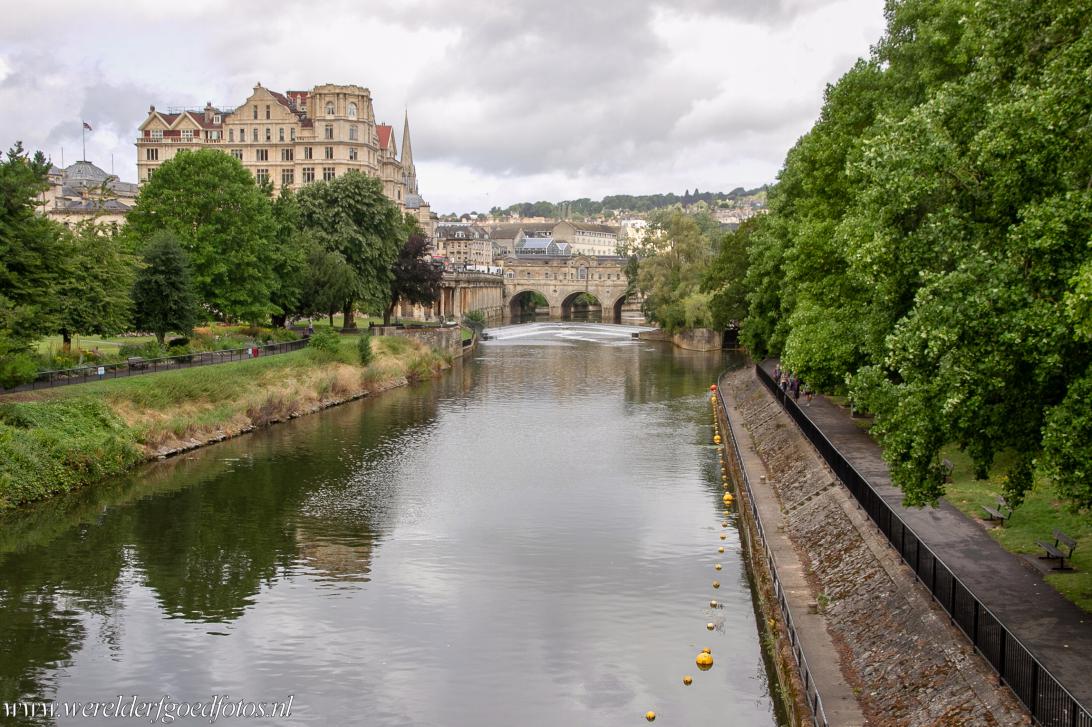
City of Bath: The Pulteney Bridge over the river Avon and the Pulteney Weir. The Pulteney Bridge was constructed in the 1770s. The bridge is one of the only four bridges in the world with shops accross the full span on both sides. The bridge was based on the Ponte Vecchio in Florence. The city of Bath was added to the UNESCO World Heritage List in 1987.

City of Bath: The Pulteney Bridge over the river Avon and the Pulteney Weir. The Pulteney Bridge was constructed in the 1770s. The bridge is one of the only four bridges in the world with shops accross the full span on both sides. The bridge was based on the Ponte Vecchio in Florence. The city of Bath was added to the UNESCO World Heritage List in 1987.
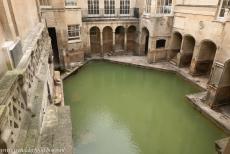
City of Bath: The Roman Baths, the 12th century King's Bath. The Romans used the water from the nearby hot water springs to supply the baths. Beneath the King's Bath lies a water reservoir built by the Roman. The Roman Baths were built around hot water springs, the only natural hot water springs in the United Kingdom.
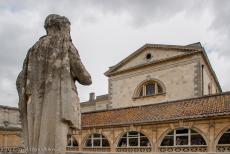
City of Bath: The stone statue of the Roman Emperor Vespasian overlooking the Roman Baths, the upper terrace that surrounds the Great Bath is decorated with statues of Roman Emperors and governors of Britain, among them Julius Caesar, Claudius, Constantine and Hadrian. Roman visitors were astonished by the high ceiling of the bath house, it was 20 metres above the baths.
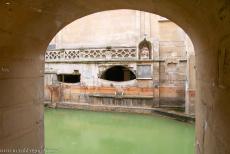
City of Bath: The King's Bath was built in the 12th century inside the ruins of the Roman Baths. The two arches opposite belong the 2nd century Spring building of the Roman Baths. The statue of King Bladud, the 9th century king of the Britons and the legendary founder of the city of Bath, was placed inside the niche in the 17th century.
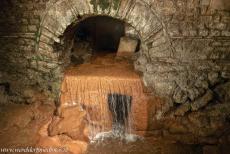
City of Bath: The Sacred Spring overflow of the Roman Baths, here the surplus water of the hot springs flows into a Roman drain and flows onto the river Avon. For thousand of years, naturally hot water at a temperature of 46 °C rises here every day. During the Roman period, over 12,000 Roman coins were thrown into the Sacred Spring as offerings to the goddess Sulis Minerva.
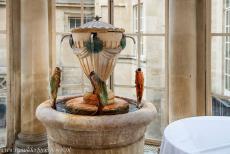
City of Bath: The renowned Spa water fountain in the Grand Pump Room, the King's Bath in the background. The Grand Pump Room is a historic building in the Abbey Church Yard, it was built from the local Bath Stone, typical for much of the city. The building was completed in 1799 and directly adjoins the Roman Baths. Now, the Georgian Grand Pump Room is a restaurant.
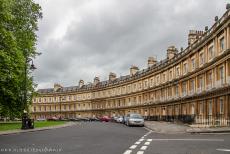
City of Bath: The Circus is a historic street lined with large town houses, the Circus forms a circle and has three entrances. The Circus was built between 1754 and 1768. The English portrait and landscape painter Thomas Gainsborough lived and worked at number 17 from 1750 until 1774, he used the house as a portrait studio.
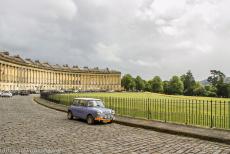
The thirty townhouses in the Royal Crescent in city of Bath were built from the local Bath Stone, the warm golden-coloured limestone gives the houses its characteristic appearance. The iconic semi-circular row of Georgian terraced houses was built between 1767 and 1774, it was the first crescent of terraced houses in England.
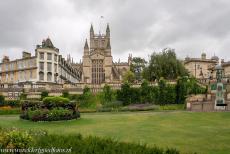
City of Bath: Bath Abbey viewed from the Parade Gardens. Bath Abbey is a former Benedictine monastery, it was founded in the 7th century. It existed until the Dissolution of the Monasteries by King Henry VIII of England in 1539. The monastery was rebuilt in the 12th and 16th centuries. The abbey was built in the Perpendicular style. The abbey is renowned for its fan vaulting.
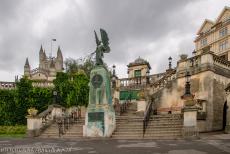
City of Bath: The Angel of Peace statue in the Parade Gardens is a memorial to King Edward VII. The Parade Gardens have a long history, dating back to medieval times when they were owned by Bath Abbey. They have remained as gardens ever since. Nowadays, the gardens are home to award-winning flower displays. The city of Bath was declared a UNESCO World Heritage in 1987.
